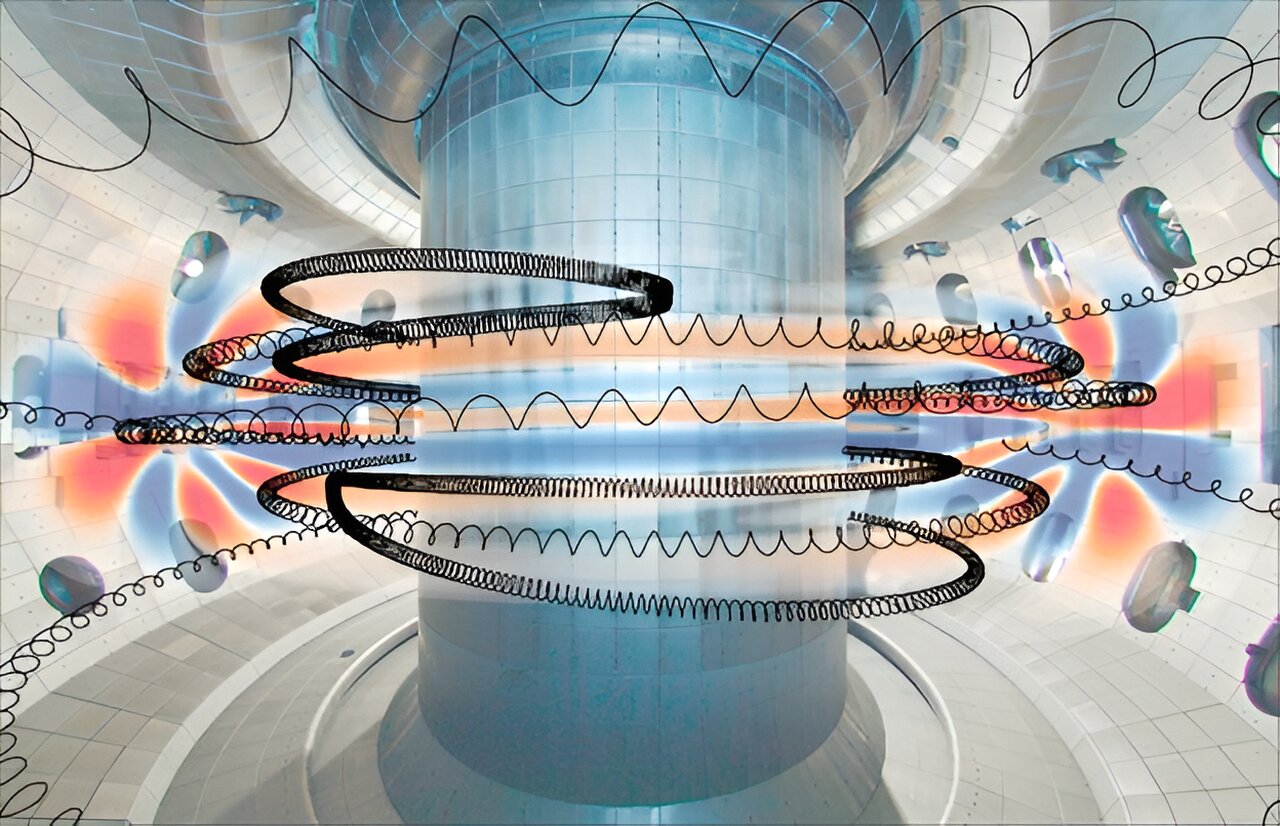Just like there are waves in the ocean, waves can also occur in an electrically charged gas called a plasma, made up of electrons and ions. In the ocean, people surf by riding their boards at nearly the same speed as the waves. This matching condition, called resonance, allows the wave to efficiently push the surfer by exchanging energy.
In plasmas, the surfers can be very fast ions, which can occur in fusion devices as a result of fusion reactions or other processes used to heat the plasma. These fast ions often do the opposite of surfers in the ocean—they give energy to the waves, causing them to grow in size. While the resonant particles are exchanging energy with the waves, they are also being jostled by other particles in the plasma through random collisions.
The type of these collisions, and how often they occur, determines how large the waves will become and how much the particles will slosh around. If the waves get too big or too numerous, they can kick the surfing particles out of the device, posing a potential hazard to the walls and also reducing the amount of fusion energy produced.
The plasma in fusion reactors must be constantly heated to maintain the temperatures necessary for producing energy. However, the fast ions that heat the plasma can also resonate with waves in the plasma. This can cause those waves to grow and potentially kick the fast ions out of the device.
Researchers need to understand resonant interactions between fast ions and plasma waves to predict and mitigate any adverse effects. A study, now published in Physical Review Letters, combined mathematical calculations with computer simulations to reveal how different types of collisions compete to determine the way energy transfers between the resonant particles and the plasma waves.
Researchers are using this new understanding to formulate models of how to keep plasmas hot enough to sustain fusion reactions. The resonant wave-particle plasma problem is also relevant to some gravitational interactions in galaxies. This means the methods in this project can apply to astrophysical research, including work on dark matter.
In fusion experiments, fast ions keep the plasma hot enough to fuse by giving their energy to the background plasma through collisions with electrons. Two distinct types of collisions occur: diffusive scattering and convective drag. Diffusive collisions are the same type that lead to the scattering of billiard balls on a pool table.
Meanwhile, drag collisions are responsible for the force you feel on your hand when sticking it out the window of a moving car. Depending on the speed of the fast ions and the temperature of the plasma, each type of collision competes to exert a greater influence on the behavior of the fast ions. Specifically, larger fast ion speed makes drag more important, whereas higher plasma temperature favors diffusion.
At the same time that the fast ions are heating the background plasma through collisions, they can also resonantly interact with plasma waves which act to sap their energy, potentially cooling the plasma. Without any collisions, a resonance between the fast ions and waves only occurs when the particle speed matches the speed of the wave exactly.
Scientists have long known that diffusive collisions act to “smear out” the resonance, allowing particles to efficiently exchange energy with the wave even if their speed is a bit faster or slower than the wave is moving. The new discovery from this research is that when drag is present, this type of collision shifts the speed at which the resonance occurs, implying that energy is actually exchanged most efficiently when there is a small difference between the speed of the fast ion and the plasma waves.
In this study, researchers characterized the strength of the wave-particle interaction with a mathematical object called the resonance function, which depends on the difference between the wave and particle speeds. When the drag collisions happen much more often than the diffusive ones, something even more bizarre happens—there are entirely new speeds at which efficient energy transfer becomes possible.
This phenomenon effectively creates new resonances that did not exist at all without drag, represented by new peaks appearing in the resonance function, and extending the range of the resonant interaction. The resonance function, derived entirely theoretically, determines how large the waves will become from feeding on the free energy from the resonant fast ions, and also how those particles will be kicked around by the wave.
Nonlinear computer simulations found excellent agreement with the theoretical predictions, confirming the validity of the derived resonance function for any combination of the two types of collisions, and advancing our fundamental understanding of how collisions influence resonant wave-particle interactions in plasmas. With the basic theory verified, it can now be confidently applied to improve the codes used to simulate how fast ions behave in fusion devices, a crucial step on the path to developing commercial fusion power plants.
More information:
V. N. Duarte et al, Shifting and Splitting of Resonance Lines due to Dynamical Friction in Plasmas, Physical Review Letters (2023). DOI: 10.1103/PhysRevLett.130.105101
Citation:
Collisions change how fast ions surf on plasma waves in fusion experiments and beyond (2023, December 4)
retrieved 4 December 2023
from https://phys.org/news/2023-12-collisions-fast-ions-surf-plasma.html
This document is subject to copyright. Apart from any fair dealing for the purpose of private study or research, no
part may be reproduced without the written permission. The content is provided for information purposes only.


